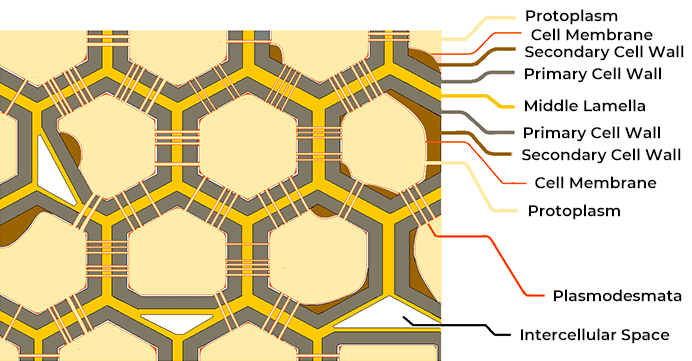Strengthening Plants Right From The Start
Have you ever had a field full of leggy seedlings that looked tall and skinny with bent stems and wondered what the cause was? Wonder no more! In this blog post we are examining the causes of leggy seedlings and solutions for preventing this in the field.
Environmental causes of leggy, skinny seedlings. If newly germinated seedlings look leggy and skinny, it may be due to one of the three common causes listed below.
- Insufficient light. This is the most common reason why leggy, tall and thin seedlings develop. Young seedlings can struggle to access adequate light, especially if seeding rate is high or there is too much “trash” in the field from a previous crop.Legginess is typically caused by a lack of adequate sunlight required to meet the plant’s needs. The stems become thin as the plants desperately try to push their leaves towards the light. Winter or early spring-seeded crops are prone to this growth pattern.
- Lack of soil moisture. Young plants can grow weak, skinny stems if the seed bed dries out or loses moisture. Dry soil prevents the seedlings from accessing the nutrients they need to grow strong stems and leaves. In particular, two main nutrients become depleted when the soil dries out: boron and calcium.Plants take up these two nutrients mainly by mass flow with water and both boron and calcium are essential components of cell walls. While boron regulates cell wall elasticity, calcium provides the stiffness and the building blocks for expansion.
- High temperatures. Heat can also cause a rapid growth spurt in the plant, leading to the stem growing faster than the leaves. This occurs due to the closure of stomata and transpiration, impacting the translocation of nutrients that rely on mass flow for their uptake by the roots.The restricted availability of calcium and boron to a plant’s leaves triggers the disproportional growth and development of the stems over the leaves. In addition, this also affects cell wall components such as the lignin ratio that controls stem strength.
Internal mechanisms governing leggy, skinny growth in plants
To understand the mechanisms which govern abnormal plant growth, like those that make it grow tall, skinny and with limited strength in its stems, one must look at the components of cell wall structure.
In a nutshell, cell walls are formed of polysaccharides cellulose bundles wrapped in hemicellulose and pectin layers, especially the boron-containing pectic polysaccharide complex boron-rhamnogalacturonan-II (RG-II-B). This is responsible for the cross-linking seen below in Figures 1 and 2.
Other polymers such as lignin, suberin and cutin, are also anchored or embedded in the cell wall, giving it extra rigidity and stiffness. This makes cell walls tough, but flexible, and sometimes rigid especially in response to the hydraulic turgor pressure exerted against it.


In case of insufficient light, lack of soil moisture or excess heat, some of these processes of cell wall formation get disrupted — especially the cross-linking process relying on boron uptake and availability.
Lower light also triggers the plants to grow taller and exhibit an etiolated growth pattern. The lack of soil moisture affects both water and nutrients absorption as well as turgor pressure. Excess temperature affects transpiration, along with water and nutrient translocation.
Prevent this from happening on the farm
The best way to get plants to establish quickly, set a good root system anchoring them into the soil, and maximize water and nutrients absorption is to add a Primer seed dressing onto the seed (Primer Zn, Primer Mn, Primer Cu, Pulse Primer, Pulse Pak, Primer Canola, Primer Soybean). You can also place a starter fertilizer in-furrow with the seed (Starter P).
Boron and calcium are essential components in either a Primer or Starter. Post-emergence, assuming seed density and plant spacing are optimal, plants should exhibit a normal pattern of growth and development — unless a lack of moisture or an excess of temperature occurs.
If that happens, farmers are encouraged to foliar spray essential nutrients alongside plant growth regulators (PGRs) that trigger lateral branching and reduce the vertical growth. Later in the season when plants are building lignin in their stems, micronutrients such as manganese and copper are essential to the process to keep the stems sturdy and prevent lodging.
OMEX can help
OMEX offers a wide range of Primers, Starters, Foliars, PGRs, Biologicals and Biostimulants to help optimize growth and development of crops in ideal and less-than-ideal conditions.
Primers and Starters set the stage for the seedlings to tap into the banded soil fertilizer and create a habitat for beneficial microbes able to mineralize nutrients and symbiotically interact with the crop.
Foliars are there to supplement essential nutrients (uPtaKe IC), correct or prevent deficiency (i.e., Foliar Advance Cu, Super Mn(+), Super B), reduce stress (i.e., C3, P3, Nutriboost) or bio-fortify crops (i.e., Zintake, Foliar Advanced Zn). We also offer a variety of PGRs to promote branching, root growth, seed set and more.
Talk to your local Ag retailer or get in touch with your OMEX representative to learn more about OMEX products and how they can help you grow good and healthy crops with a full yield potential.
